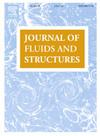嵌入声黑洞的板腔系统振动声建模及能量传输分析
IF 3.4
2区 工程技术
Q1 ENGINEERING, MECHANICAL
引用次数: 0
摘要
振动板向声腔辐射的噪声问题是工程领域普遍存在的问题。声黑洞(ABH)作为一种新型的振动和噪声控制手段正受到越来越多的研究关注,深入了解声黑洞面板与空腔之间的耦合机理对此类场合的高效设计和应用具有重要意义。本文建立了由ABH板和矩形空腔组成的ABH板腔耦合系统的振动-声耦合半解析模型,其中ABH板的弯曲振动和声腔内声压分布函数分别选择二维和三维修正傅立叶级数作为容许函数。通过瑞利-里兹法,求解了耦合系统的模态特性和动力学行为。首先,将模型的精度与有限元计算结果进行对比验证。然后,通过与均匀结构的比较,在板腔耦合系统中引入ABH结构可以降低箱体内的噪声。此外,通过耦合界面上的声强矢量分布,研究了ABH板与腔体之间的能量传输行为。同时,从能量传输的角度研究了耦合系统的降噪机理。最后,通过实验验证了该模型的准确性。本文章由计算机程序翻译,如有差异,请以英文原文为准。
Vibro-acoustic modeling and energy transmission analysis of a panel-cavity system embedded with an acoustic black hole
The noise radiated from a vibrating panel into an acoustical cavity is a problem widely encountered in various engineering branches. As a novel vibration and noise control means, Acoustic Black Hole (ABH) is attracting more and more research attention, and a deep understanding on the coupling mechanism between ABH panel and cavity is of fundamental significance for the efficient design and application in such occasions. In this study, a semi-analytical vibro-acoustic coupling model of the coupled ABH panel-cavity system consisting of an ABH plate and a rectangular cavity is established, in which the two-dimensional and three-dimensional modified Fourier series are chosen as the admissible functions for the flexural vibration of the ABH plate and the sound pressure distribution function in the acoustical cavity, respectively. Through the Rayleigh-Ritz procedure, the modal characteristics and dynamic behavior of the coupling system are solved. First, the accuracy of the proposed model is validated against those calculated from finite element analysis. Then, through the comparison with its uniform counterpart, the introduction of the ABH structure in the coupled panel-cavity system can reduce the noise inside the enclosure. Furthermore, the energy transmission behavior between the ABH plate and the cavity is investigated via the sound intensity vector distribution over the coupling interface. Meanwhile, the noise reduction mechanism of the coupling system is studied from an energy transmission perspective. Finally, the accuracy of the proposed model was verified by the experiment.
求助全文
通过发布文献求助,成功后即可免费获取论文全文。
去求助
来源期刊

Journal of Fluids and Structures
工程技术-工程:机械
CiteScore
6.90
自引率
8.30%
发文量
173
审稿时长
65 days
期刊介绍:
The Journal of Fluids and Structures serves as a focal point and a forum for the exchange of ideas, for the many kinds of specialists and practitioners concerned with fluid–structure interactions and the dynamics of systems related thereto, in any field. One of its aims is to foster the cross–fertilization of ideas, methods and techniques in the various disciplines involved.
The journal publishes papers that present original and significant contributions on all aspects of the mechanical interactions between fluids and solids, regardless of scale.
 求助内容:
求助内容: 应助结果提醒方式:
应助结果提醒方式:


